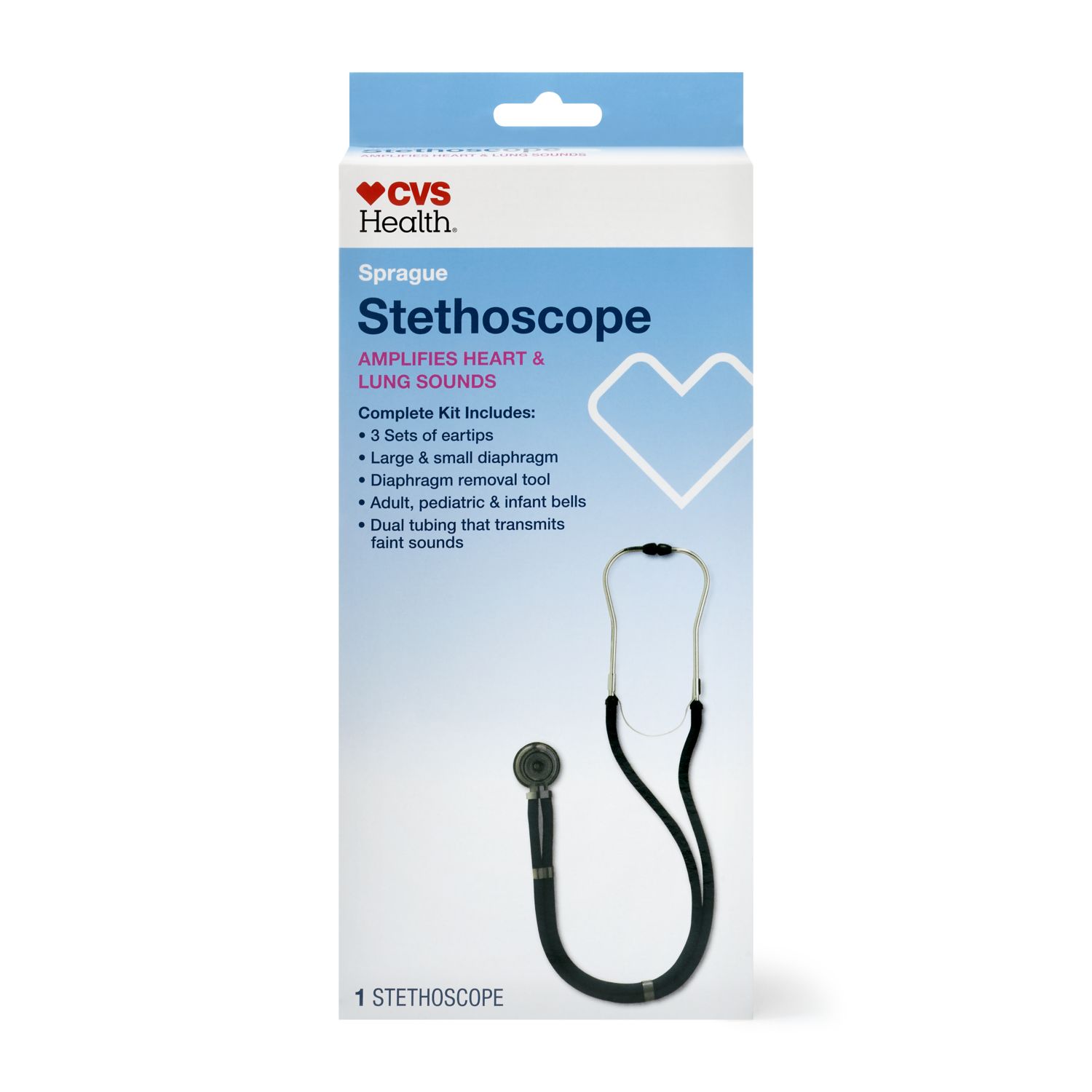Monitores de ritmo cardíaco y estetoscopios
)
Shop more monitors
Monitores de ritmo cardíaco
Stethoscopes and heart rate monitors can be helpful medical tools to have at home. You can find these devices online or at most drug stores, and they can help you monitor things in between visits to the doctor. If you're not sure how stethoscopes and heart rate monitors work or what to look for before buying, read on for some helpful tips and information.
Estetoscopios
You've probably seen a stethoscope all your life as you visit your doctor. These crucial tools are made to listen to your heart and breathing to help identify signs of a potential problem. They're compact and easy to use, which makes them a good addition to your at-home first aid kit. A stethoscope is comprised of a small, metal round attachment covered with soft plastic. The metal piece is called a chest piece, while the plastic part is called the diaphragm. When you place it on someone's chest, the sound it produces will cause the diaphragm to gently vibrate. The sound travels through metal tubes and into your ears so you can listen for things like heart palpitations, wheezing, or any other potential problems in the heart and lungs.
How To Use A Stethoscope
When you use a stethoscope at home, make sure it's in a quiet, peaceful environment so you can hear clearly. Ensure that the "patient" is comfortable and calm. Listen thoroughly and carefully and write down notes if you have any concerns so you can take them to your doctor. These handy tools are especially useful for people with heart or breathing-related health conditions. Practice using your stethoscope so you can get a good idea of what to listen for and how to use it correctly.
Home Heart Rate Monitor
There are several reasons why you may want to have a heart rate monitor for use at home. If you're into physical fitness, you can use these devices to help you reach or determine your preferred targeted heart rate. For those with a heart condition, a heart rate monitor can help you make sure your heart is beating at a safe level. Track your readings and report anything unusual to your doctor if you need to. These small devices are easy to use and can give you your resting heart rate as well as your chosen heart rate zone, depending on the features.
Why Should I Monitor My Heart Rate?
There are several reasons why someone may choose to have an at-home heart rate monitor. Whether you are into physical fitness or you have a family history of heart disease, it is important to monitor your heart rate so you can keep track of your cardiac health and easily find abnormalities before it may be too late to do so. Some may be struggling with a heart condition already, which makes it even more important to track their heart rate in order to make sure everything is working as it should. You should track your ratings and always make sure to report anything you find unusual to your doctor.
How to Monitor Heart Rate
Most heart rate monitors you'll find in stores are incredibly easy to use. For example, the AliveCor KardiaMobile EKG Monitor from CVS makes it simple. All you do is open the Kardia mobile app on your phone and select "record", then place the KardiaMobile sensor near your phone and gently rest your fingers on the sensors. In 30 seconds, you should be able to see your results. At-home heart monitors are not the same as going to the doctor to have your heart rate checked. If you feel something is wrong, but your monitor isn't necessarily showing it, be sure to contact your doctor right away.
Búsquedas relacionadas
Tensiómetros, Monitores de ritmo cardíaco, Dispositivos de alerta médica, Podómetros, Oxímetros de pulso, Termómetros

)
)
)
)